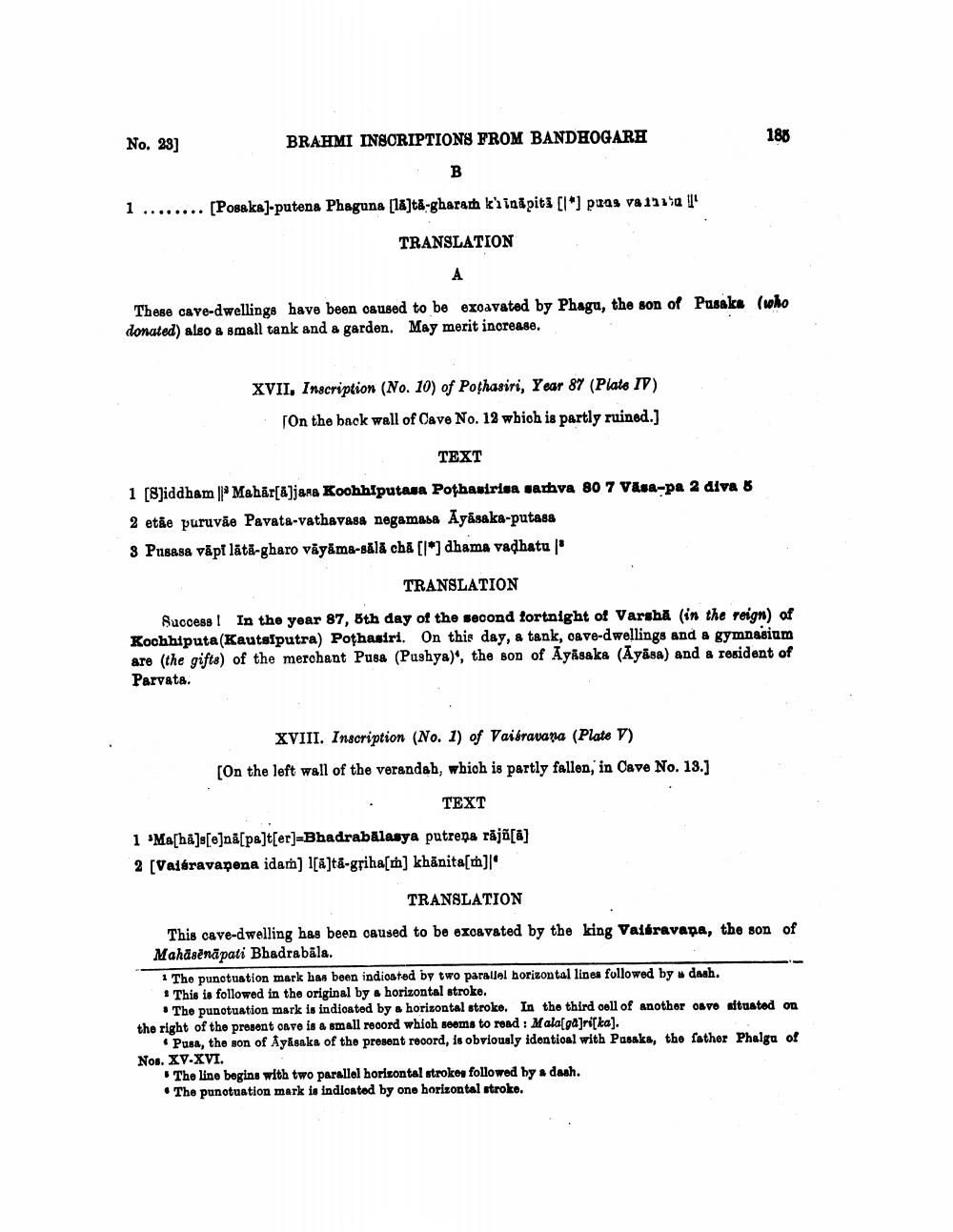________________
No. 28]
BRAHMI INSCRIPTIONS FROM BANDHOGARH
180
B
1 ........ [Posaka)-putena Phaguna [16]t.-gharam klinäpiti [l*) paus va 12350
TRANSLATION
A These cave-dwellings have been caused to be excavated by Phagu, the son of Pusake (who donated) also a small tank and a garden. May merit increase.
XVII, Inscription (No. 10) of Pothasiri, Year 87 (Plate IP)
On the back wall of Cave No. 12 which is partly ruined.]
TEXT
1 [8]iddham || Mahār[a]jana KoohhIputasa Pothasirisa sarhva 80 7 Vasa-pa 2 diva 8 2 etke puruvāe Pavata-vathavasa negamaba Ayasaka-putasa 3 Prsasa väpf lātä-gharo väyāma-sälä сha [l*dhama vadhatu |
TRANSLATION
Success! In the year 87, 8th day of the second fortnight of Varshă (in the reign) of Kochhiputa(Kautsiputra) Pothasiri. On this day, a tank, oave-dwellings and a gymnasium are (the gifts) of the merchant Pusa (Pushya)', the son of Ayāsaka (Ayāsa) and a resident of Parvata.
XVIII. Inscription (No. 1) of Vaisravana (Plate 1) [On the left wall of the verandah, which is partly fallen, in Cave No. 13.]
TEXT
1 Ma[ha]s[e]nā[pa]t[er]=Bhadrabalasya putrena rāja[a] 2 [Valóravapena idam] 1[A]tā-griha[m] khānita[]]"
TRANSLATION
This cave-dwelling has been caused to be excavated by the king Vaibravana, the son of Mahäsënāpati Bhadrabāla. 1 The punctuation mark has been indicated by two parallel borizontal lines followed by dash. 1 This is followed in the original by & horizontal stroke.
• The punotuation mark is indicated by a horizontal stroke. In the third ooll of another OBVO situated on the right of the present cave is a small record which seems to road: Mala[ga]ri[ka].
Pusa, the son of Ayisaka of the present record, is obviously identioal with Pasaka, the father Phalgu of Nos. XV-XVI.
The line begins with two parallel horizontal stroke followed by dash. • The punotuation mark is indiosted by one horizontal stroke.




